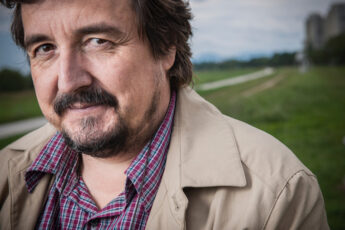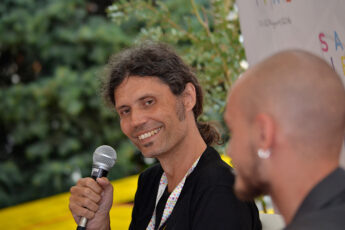If Your Hand Is Dirty from Killing One Child or One Hundred Children, It Is Still Evil
Robert Kirchhoff’s A Hole in the Head (2016)
Vol. 75 (May 2017) by Jack Page
The specific details of the Romani holocaust during WWII have been greatly contested, so much so, that even the exact number of victims remains unknown today. In order to uncover the tragic mysteries and lay bare the unknown, independent filmmaker Robert Kirchhoff embarks on a contemplative journey that intends to confront a historical past that was almost left behind.
Towards the very beginning of the documentary, a defeated journalist and historian highlight the problem caused by the silence surrounding the mass killings. The lack of credible witnesses, false testimonies and memories worn away by time plague their path to the truth. The information they gather in interviews is at times corroborated with others or completely debunked. A seemingly trustworthy witness is soon undermined by his absurd theories on Romani culture, claiming that Picasso, Bill Clinton and Antonio Banderas are all secretly of Romani descent. A traditional gypsy song “Gypsy Sadness is Great” is convincingly sung by the relative of a survivor, only to be exposed as a fabrication, composed spontaneously for the cameras. The details of some accounts are so depraved and barbaric that their validity is always under suspicion, such as the victim who claims the soldiers bit the nipples off of all the women inside the concentration camps. There are even those superstitious few who believe that evil spirits inhabit the garments of military uniform, sabotaging the credibility of their previously sound testimonies. It is quite dangerous for a documentary to be so persistent in focusing on the fallibility of the information it presents, but Kirchhoff isn’t negating the fact the genocide did happen, merely questioning what exactly happened.
The title of the documentary refers to the scar a victim was left with in her skull. In a room full of attentive, teary-eyed students, a middle-aged teacher recounts her harrowing experience of the camp. Her mother, pregnant with twins, was given the ultimatum: be sterilized or sent to Auschwitz. Narrowly avoiding a forced abortion, she reveals the death of her sister at the hands of the camp doctor. At just three weeks old, she herself was taken away from her mother to be experimented on, injected behind her right eye in an attempt to change their color. In the classroom, the teacher answers her student’s questions with the unwavering proof of x-rays and medical records. She corrects her student’s claim that it is a scar rather than a hole in her head. The filmmaker’s decision to use this turn of phrase as the title for the film suggests it may have a deeper, more metaphorical meaning relating to the film’s ideology. In this instance, the hole in the head could represent the loss of memory in the nation’s collective consciousness, the hole itself a visual aid referring to the absence of accurate facts with regards to the Roma genocide and its survivors. This missing knowledge is further complicated by erroneous witness accounts, embellishing rumors and unfounded opinions of what relatives of the victims believe took place in 1943. Here, Kirchhoff has exposed the danger of silencing traumatic, historical events. As a result of the gap or grey area that is created without evidence, history is susceptible of being consumed by its own mythology rather than fact.
There are a number of stylistic and poignant motifs in the film, foregrounded by the director’s emotive use of nature. For example, the sprawling establishing shots of the forest offer the spectator a feeling of helplessness. The camera is displaced within the chaotic space of the forest, unanchored and lacking in direction, as if lost in the wilderness of misinformation, like the Romani. Memorials encased in frozen snow and the skeletal remains of car parts also enhance the audience’s feeling of abandonment. The drab aesthetic emphasizes the dreary reality of the people’s lives, both colorless and muted. The constant pattering of rain on the cold, hard ground compliments this sombre setting and sense of despair. Perhaps overly prophetic, Kirchhoff nonetheless builds an appropriately hopeless environment in which he can tastefully probe his subject matter.
Snow also has a similar thematic significance. In another moving scene, voice-over narration informs the viewer why he believes snow to fall: so that animals can make tracks in the ground. It is no wonder then, that the final shot of the film has the camera tilt downwards to frame a flurry of footsteps on the freshly fallen snowy ground. These prints belong to the surviving victims of the camp, showing their respect for the dead by visiting the war memorial. The lingering shot is a reminder of the impermanence of human memory but also of its ultimate timelessness. However faint or hazy it may become over time, some truth, somewhere will always remain.
Kirchhoff’s documentary stresses the importance of preserving history and the right to resist the erasure of traumatic artifacts. Remembrance can perform a vital part of a country’s national identity and culture. Without it, we risk losing a coherent collective consciousness and are prone to forgetting the truths of the past.




Leave a Comment